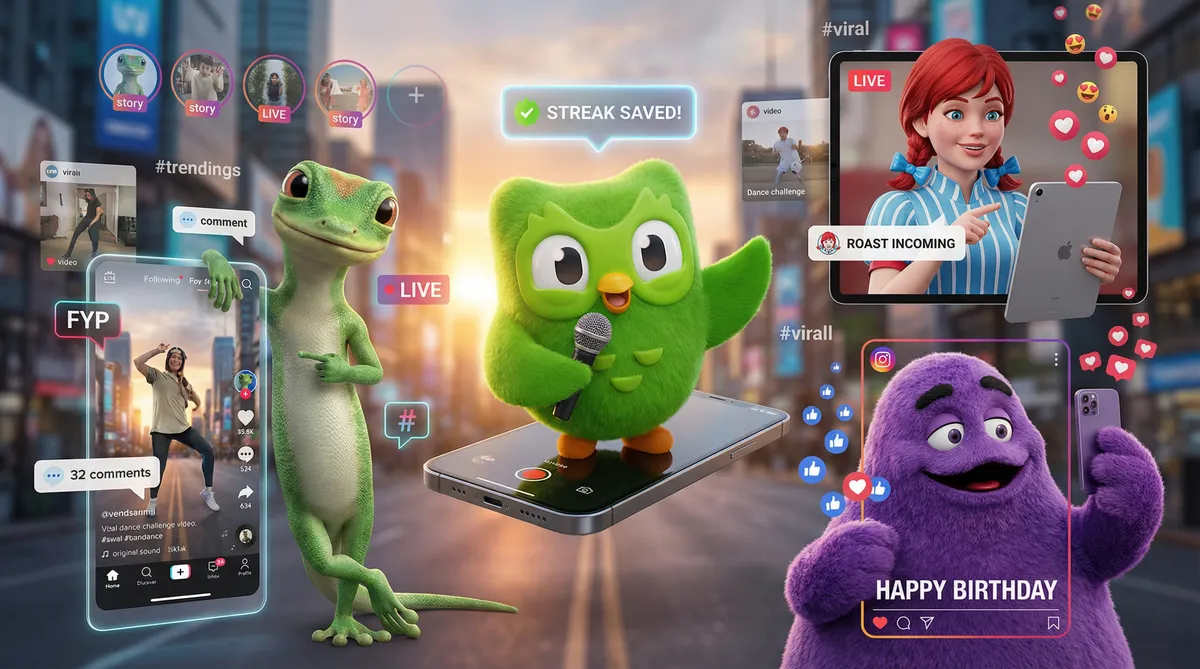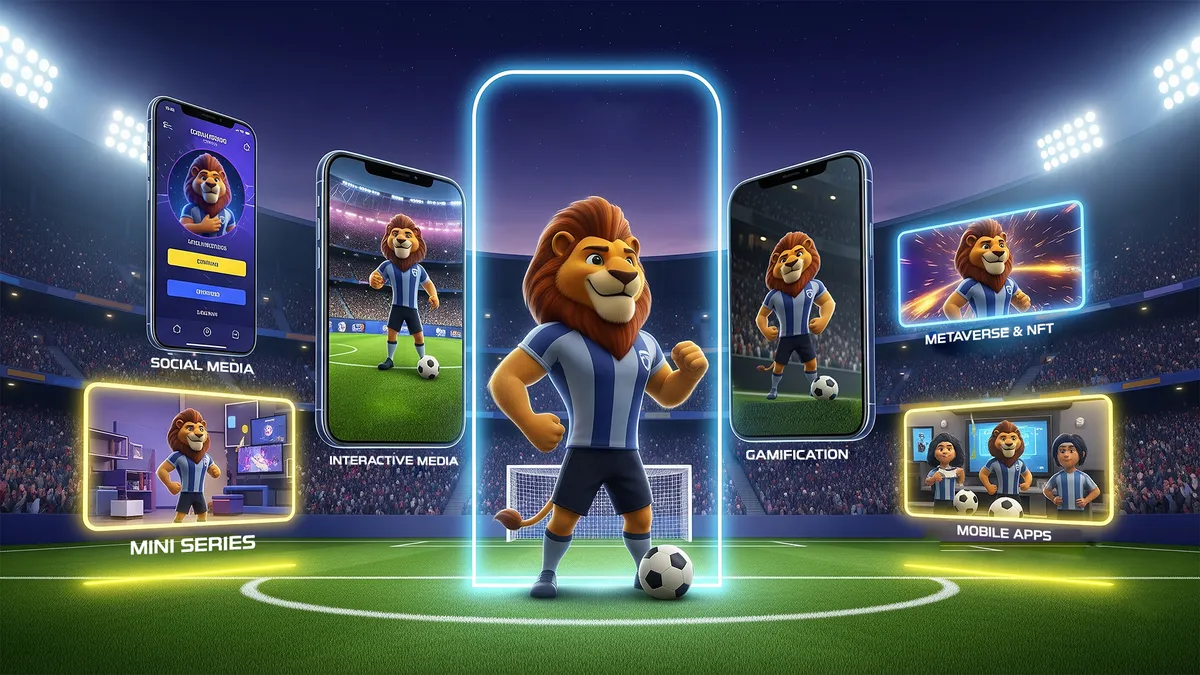
- From Lucky Charms to Team Icons
- Sport Mascot in the AI Age: Multi-dimensional Assets
- Core Archetypes of Popular Sports Mascots in the U.S.
- What Makes Unique Mascot Ideas for Sports Teams?
- Symbolic Animal Sports Mascot Ideas for Baseball
- New Sports Team Mascot Ideas for Basketball
- Creative Sports Team Mascot Ideas for Ice Hockey
- Inspiring Sports Mascot Ideas for Soccer Teams
- Mascot Character Design Ideas for Football Teams
- Contact Us Today for a Free Consultation!
Key Takeaways:
- Sports mascots evolved from 19th-century symbols of fortune, like Princeton’s tiger, to mid-20th-century costumed entertainers such as the Phillie Phanatic.
- Core archetypes encompass animal representations for strength, human caricatures tied to local heritage, and fantastical designs for memorable humor.
- Baseball concepts feature regional figures like a Midwest bison in railroad attire or a Florida hammerhead shark with adaptive traits.
- Basketball and hockey ideas include a Texas mustang with electrified features or a Seattle kraken wielding sticks in maritime style.
- These mascots foster fan loyalty through merchandise sales and community ties, enhanced by AI for interactive digital experiences.
“What are some fresh sports mascot ideas for my team?” This question can stump many sports team owners and marketers.
Mascots are the heartbeat of American sports culture.
What once started as simple symbols of luck has transformed into a strategic blend of design, cultural relevance, and commercial success. From fierce lions to whimsical, imaginative creatures, these colorful characters help create unforgettable moments with fans.
Let’s take a few minutes to explore the fascinating world of modern sports mascots, exploring their evolution, the archetypes that dominate the scene, and the trends shaping their future.
Whether you’re a sports club owner, marketer, or just a die-hard sports fan curious about these colorful characters, let’s unpack what makes mascots such a powerful force in American sports.
From Lucky Charms to Team Icons
Here is a surprising fact about the roots of team mascots: they were more about superstition than engagement!
The word mascot comes from the French term mascotte, meaning “lucky charm“. Historically, mascots were symbols believed to bring good fortune.
Think of Civil War military units with live animals like Sallie the dog or Abe the bald eagle, serving as emblems of protection.
According to a report by EBSCO, by the late 19th century, college sports teams adopted mascots like the Princeton Tiger or Penn State’s Nittany Lion, often choosing fierce animals to project strength and intimidate opponents.
Back then, mascots were static. Think taxidermy mounts or live animals paraded around. The Chicago Cubs, for example, once used a stuffed bear cub in 1908.
Over time, sports culture grew, and so did the mascot’s role. They evolved from passive symbols to active entertainers, thanks to innovations in American puppetry and costumed characters in the mid-20th century.
The 1970s marked a turning point.
Mascots like San Diego Chicken (1977) and the Phillie Phanatic (1978) brought a new level of energy with their comedic antics and fan interaction.
These costumed mascots were a far cry from the logistical challenges of live animals. Suddenly, mascots weren’t just symbols; they were performers, engaging crowds, mocking opponents, and creating memorable moments.
This shift turned mascots into dynamic brand ambassadors, capable of starring in commercials, leading community events, and building emotional connections with fans.
Sport Mascot in the AI Age: Multi-dimensional Assets
Today, a mascot is more than a sideline act. It’s the face of a team, embodying its values and personality. Whether it’s firing hot dogs into the stands or going viral on social media, the modern mascot is a multifaceted asset that drives fan loyalty and revenue.
How, you ask?
Digital creations are taking center stage in today’s modern world. Sports teams mascots are no exception.
The trend is clear: AI-powered mascots are replacing physical ones. Their capabilities (real-time interactions, scalability, cost-effectiveness, to name a few) enable them to thrive as digital sports stars.
Understanding this transformation is crucial for teams looking to strengthen their identity and connect with fans in new ways.
To capitalize on this trend, adopting a total mascot solution is essential.
What exactly do we mean by a mascot total solution?
Let me simplify it for you. Some people think a mascot is just about design. At Dream Farm Agency, however, we believe a great mascot is the result of strategic branding, smart marketing, creative storytelling, and professional art direction. Without these elements, a mascot is just a drawing.
At Dream Farm, there is a team of experts working on every step of the process. From initial concepts and storytelling to creating eye-catching visuals for stadiums and social media, we handle it all to ensure a smooth experience.
But that’s just the beginning.
The real magic happens when we integrate AI into your unique mascot ideas for sports teams. The digital AI-powered version of your team icon will become an interactive part of your team’s identity.
As I mentioned earlier, creating a mascot involves several steps. To help you navigate the process, I recommend checking out our blog article, “Creating a Modern Sports Mascot: A Professional Process” before diving into new mascot ideas for a team. This resource will provide you with valuable insights and a roadmap to guide your creative journey.
If you’re thinking about adding a mascot to your communication plan, our team is here to help. With over 10 years of experience and the development of more than 2,500 characters, we’ll guide you through every step to unlock the full potential of your new team member!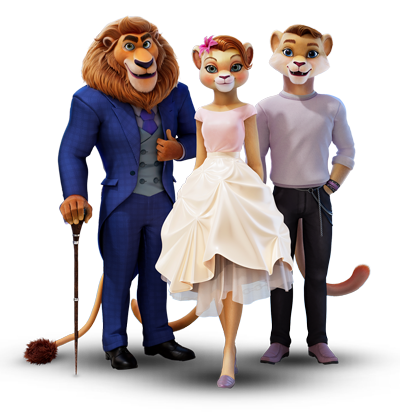
Core Archetypes of Popular Sports Mascots in the U.S.
Not all mascots are created equal.
Coming up with winning sports team mascot ideas requires an understanding of what works for other teams and what keeps their fans engaged
Let’s take a moment to analyze the market.
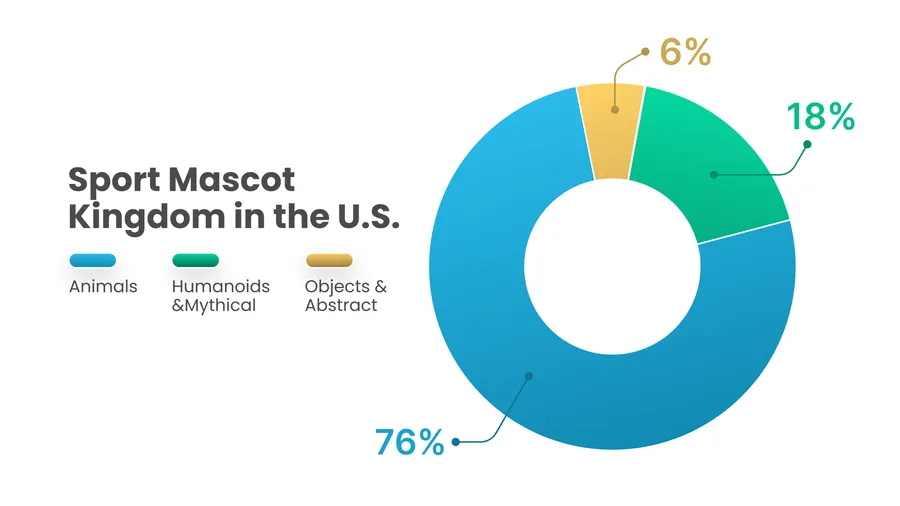
American sports mascots fall into three main categories. Understanding these categories is essential because they each serve different purposes and resonate with fans in unique ways.
Take a moment to explore each category and see how they can inspire your mascot creation process.
The Animal Archetype: Power and Instinct
From the soaring dunks in the NBA to the hard-hitting tackles in the NFL and the satisfying crack of the bat in MLB, animals truly rule the world of sports mascots.
And it’s easy to see why.
They’re a universal symbol of strength, speed, agility, cunning, and ferocity. Those are qualities teams want to project. Moreover, they tap into instinctual traits, making them instantly recognizable and emotionally resonant.
Take the Chicago Bulls’ bull, a symbol of tenacity, or the Baltimore Ravens, evoking cunning and agility.
Generally speaking, the animal sports mascot ideas below are especially popular in the U.S.:
- Predatory animals like eagles and hawks symbolize vision and freedom.
- Large felines like lions, tigers, and panthers are chosen to strike fear into opponents and rally fans.
- Canines like huskies and bulldogs are chosen for their association with loyalty, tenacity, and teamwork.
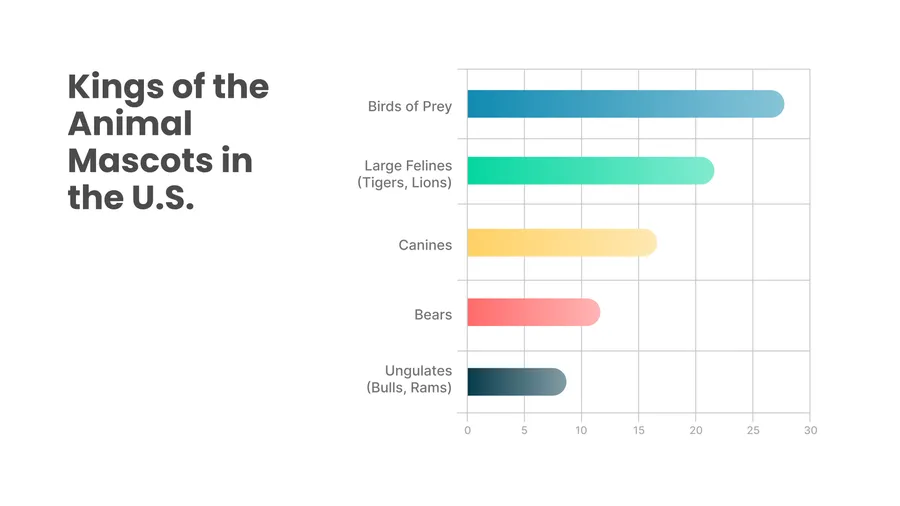
But an animal archetype is not just about ferocity. Some animal mascots tie into local identity.
Think of the California Golden Bears as representing the University of California, Berkeley. Their mascot, Oski the Bear, pays homage to the state’s rich wildlife and the spirit of the Golden State.
Or the Florida State Seminoles feature a spear-wielding Native American mascot named Chief Osceola, who rides a horse named Renegade, symbolizing the cultural heritage of the Seminole Tribe and the state’s history.
Let’s not forget the University of Georgia has its beloved bulldog mascot, Uga, which reflects the state’s strong agricultural roots and affinity for the breed.
Animal archetypes aren’t just a hit with college teams; they’re also favorites among professional sports teams. In our blog article “45 Famous Sport Mascots that Bring Teams and Fans Together” we introduce the top examples of successful sports mascot ideas and explore the stories behind their designs.
The Human/Historical Caricature: Local Pride
Human-based mascots ground a team in its community’s history and culture. They create a deep, personal connection by reflecting the values and history of their region.
Take the West Virginia Mountaineer, rifle in hand, or Nebraska’s Herbie Husker, a stylized farmer reflecting the state’s agricultural roots.
These mascots transform a team into a cultural ambassador, fostering a sense of belonging among fans.
The popularity of this archetype comes from its connection to local traditions, which helps the team feel like a true part of the community. They’re not just about sports; they’re about shared identity and pride.
Why does it work?
Human-based mascots create a deep, personal connection by reflecting the values and history of their region.
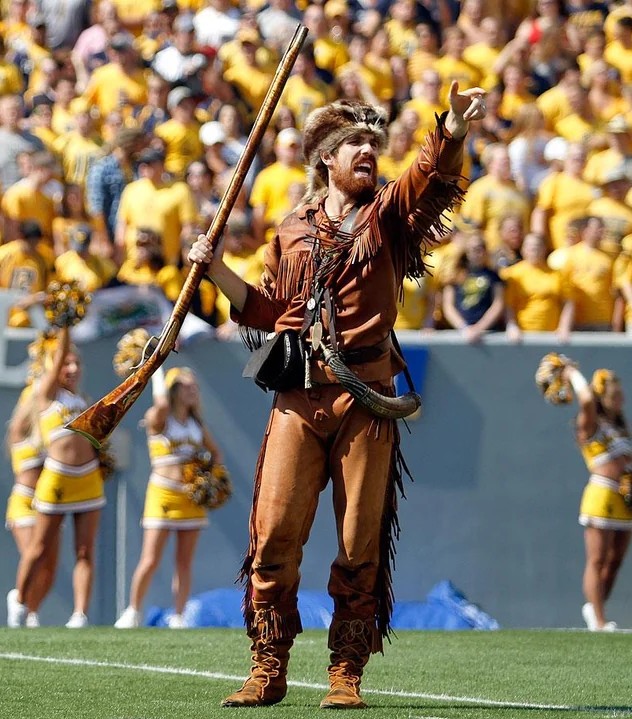
The Unconventional/Fantastical: Bold and Memorable
Are you looking for a unique face for your team?
Here is a wild card.
Think of unconventional mascots like the Philadelphia Flyers’ Gritty, the Phillie Phanatic, or the Stanford Tree. These characters defy logic with their quirky, exaggerated designs and larger-than-life personalities.
Such wild, unique sports mascot ideas thrive on humor and unpredictability. If you’re trying to please everyone, the unconventional archetype sounds like the right choice.
In fact, the polarizing nature of unconventional/fantastical mascots is often their strength.
Gritty, with his googly eyes and chaotic energy, is a perfect example of a mascot designed to stand out.
Gritty’s debut in 2018 was described as an “acid trip,” yet his bold personality resonated with Philadelphia’s gritty, self-effacing fan base, making him a viral sensation.
Why it works: Unconventional mascots break the mold, offering creative freedom and a unique identity that grabs attention.
What Makes Unique Mascot Ideas for Sports Teams?
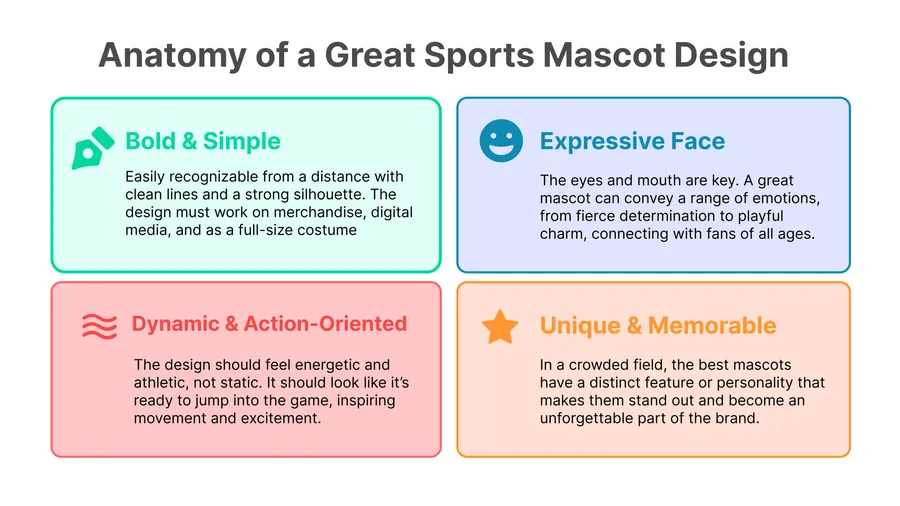
Before finding it out, let’s clarify one important point: mascots are more than just characters; consider them as psychological totems.
They embody traits like courage, loyalty, or resilience, giving fans something to rally behind.
Whether your mascot is an animal or a local symbol, remember that a mascot’s personality creates lasting memories. Fans don’t just cheer for the team; they form attachments to the mascot, showing up to games just to see their antics.
This emotional bond turns a mascot into a symbol of community. That’s why fans go wild for mascot-themed merchandise like t-shirts, hats, and plush toys.
The Beijing 2022 Winter Olympic mascot Bing Dwen Dwen, for example, sparked a merchandising frenzy in China, proving the commercial power of a beloved character.
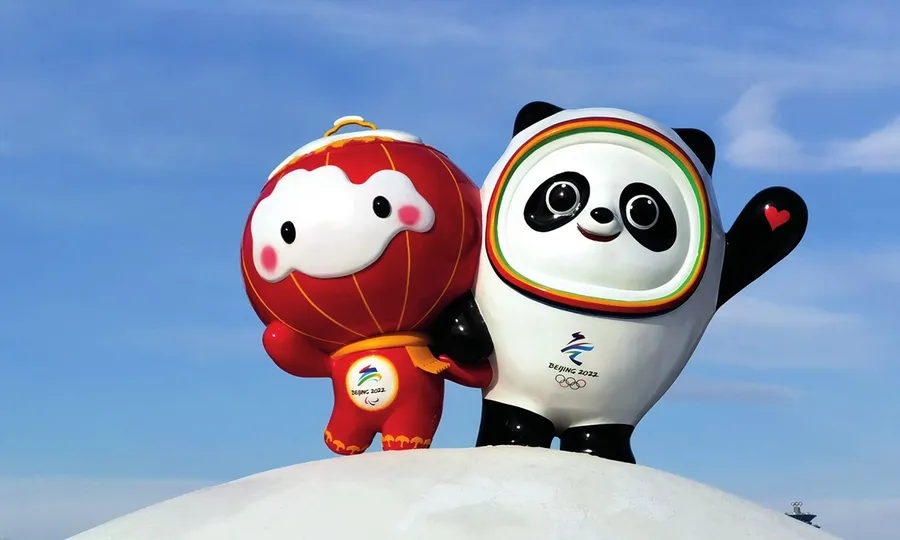
Case Studies: The Phillie Phanatic vs. Gritty
Philadelphia is home to two of the most iconic mascots in sports: the Phillie Phanatic and Gritty.
Their contrasting approaches reveal the blueprint for modern mascot success.
Stay tuned.
The Phillie Phanatic: The Family-friendly Icon
Debuting in 1978, the Phillie Phanatic, a green, furry creature from the Galapagos Islands, was designed to draw families to Phillies games.
The design was inspired by the San Diego Chicken and developed with input from Jim Henson’s Muppet team. The Phanatic’s goofy, G-rated antics (think ATV rides and hot dog cannons) soon captured the heart of its audience.
His universal appeal earned him a spot in the Mascot Hall of Fame in 2005.
The Phanatic’s success lies in his approachable, lovable personality. He’s a safe, family-friendly character who brings joy to fans of all ages, making him a timeless symbol of the Phillies.
View this post on Instagram
Gritty: The Polarizing Rebel
When the Philadelphia Flyers unveiled Gritty in 2018, they took a risk.
Described as “someone you’d high-five but not hug”, Gritty’s wild appearance and anarchic antics (like falling on his debut or threatening rival mascots) were polarizing.
But that was the point.
Designed for Philadelphia’s tough, self-deprecating fan base, Gritty wasn’t meant to please everyone; just to embody the city’s “rough and tumble” spirit.
His digital-first launch was a masterstroke.
Gritty’s viral social media presence turned him into a global phenomenon, proving that a mascot doesn’t need universal appeal to succeed.
By leaning into Philadelphia’s unique identity, Gritty forged a deeper connection with his core audience.
View this post on Instagram
The Phanatic and Gritty highlight a key shift in mascot strategy.
While the Phanatic was built for broad, family-friendly appeal, Gritty thrives on hyper-local authenticity.
Modern brands are learning that a mascot designed for a specific audience, even if it alienates others, can create a stronger, more loyal fan base.
It’s about being true to the team’s identity, not chasing universal likability.
Rather than conforming to external expectations, you should focus on what truly matters to your team.
Here are some fresh concepts and design ideas that may inspire you.
Symbolic Animal Sports Mascot Ideas for Baseball
Confident Bison Mascot with Bat (Midwest)
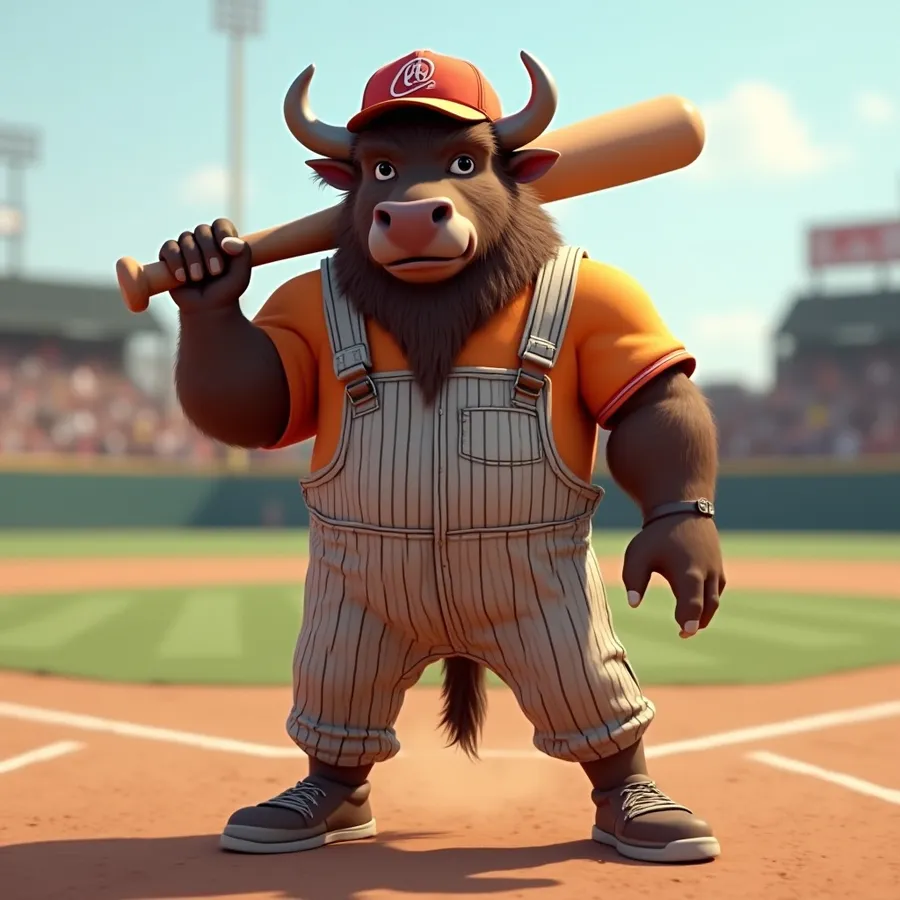
Concept: A strong American bison with railroad worker gear.
Design idea: Muscular build, striped overalls, and a baseball cap. Digital version stomps the ground to create AR “dust clouds.”
Story: Honors the railroads that expanded baseball towns across the Midwest.
Archetype: Guardian / Everyman
Hammerhead Shark (Florida)
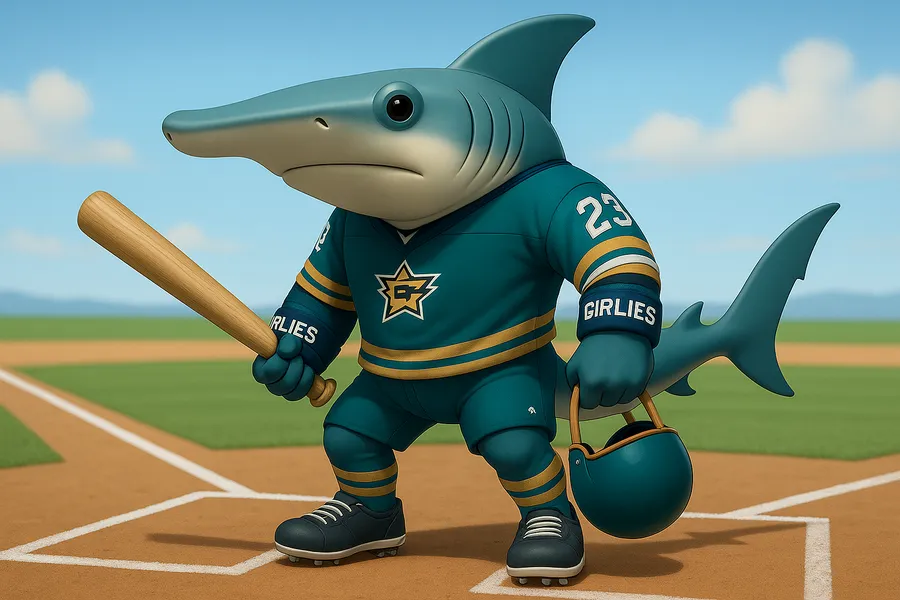
Concept: Hammerhead shark in retro team jersey.
Design: Playful with a massive jawline, can “chomp” in AR filters.
Story: Symbol of Florida’s waters, where sharks represent strength and adaptability.
Mischievous Rocket Raccoonster (Houston)
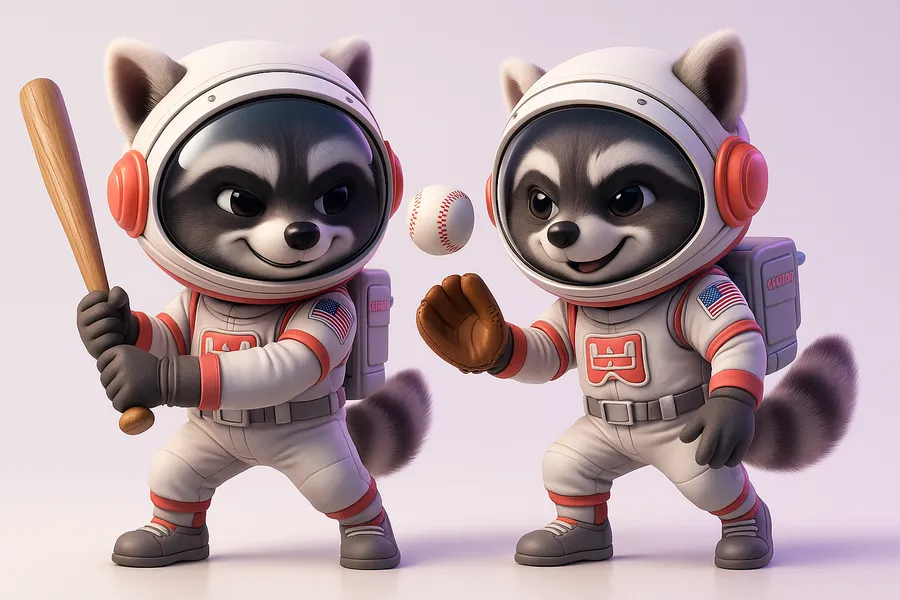
Concept: Space raccoon with a jetpack.
Design: Futuristic helmet, NASA-inspired suit, mischievous grin.
Story: Honors Houston’s space heritage (NASA’s Johnson Space Center). Perfect for metaverse “space games.”
New Sports Team Mascot Ideas for Basketball
Futuristic Hawk Basketball Player (New York City)
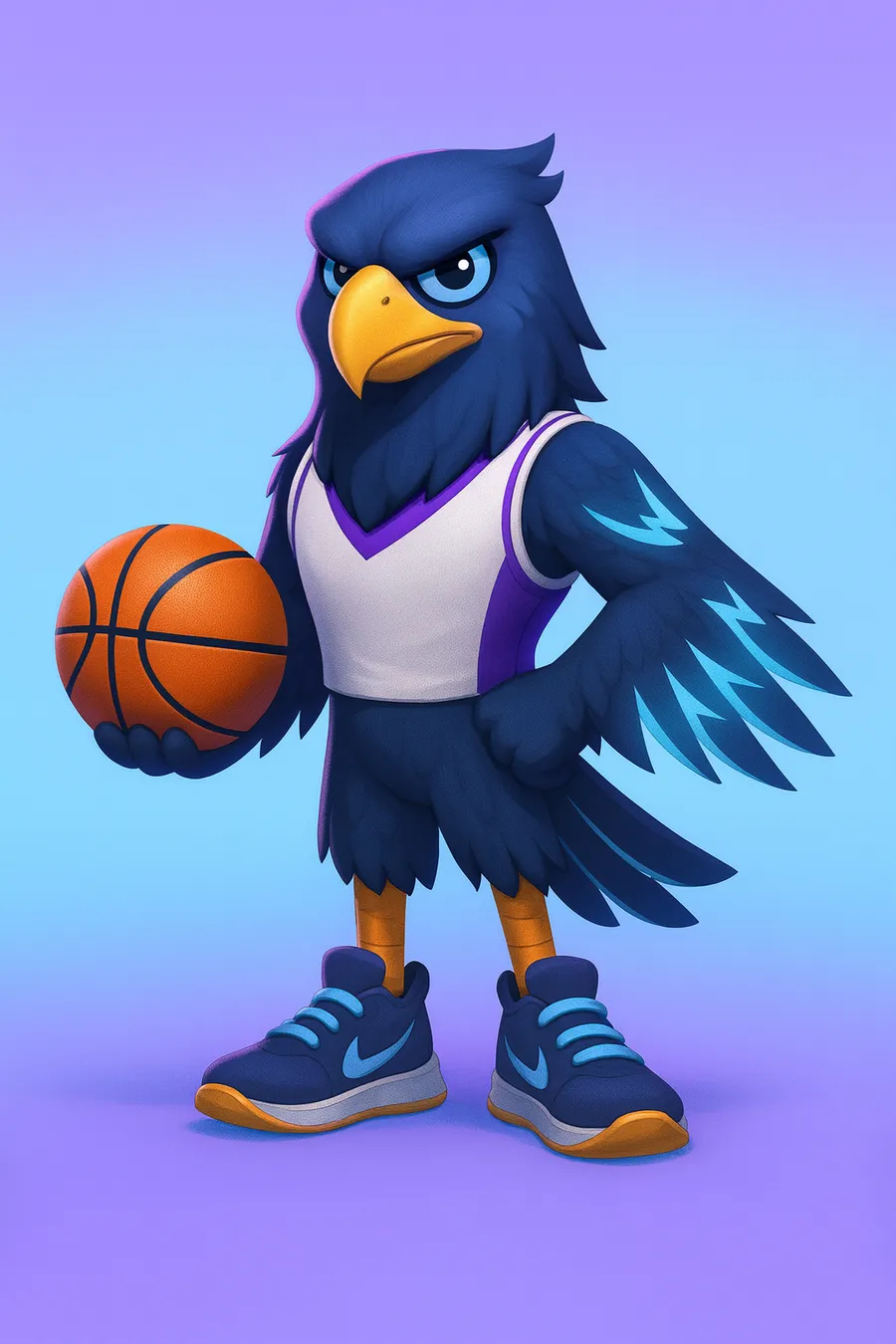
Concept: A fierce hawk with neon sneakers.
Design: Stylized wings with glowing feather patterns, agile stance.
Story: Inspired by the hawks nesting in NYC’s skyscrapers, symbolizing resilience and urban survival. Perfect for TikTok dunks and AI-guided “flight cams”.
The Mustang (Texas)
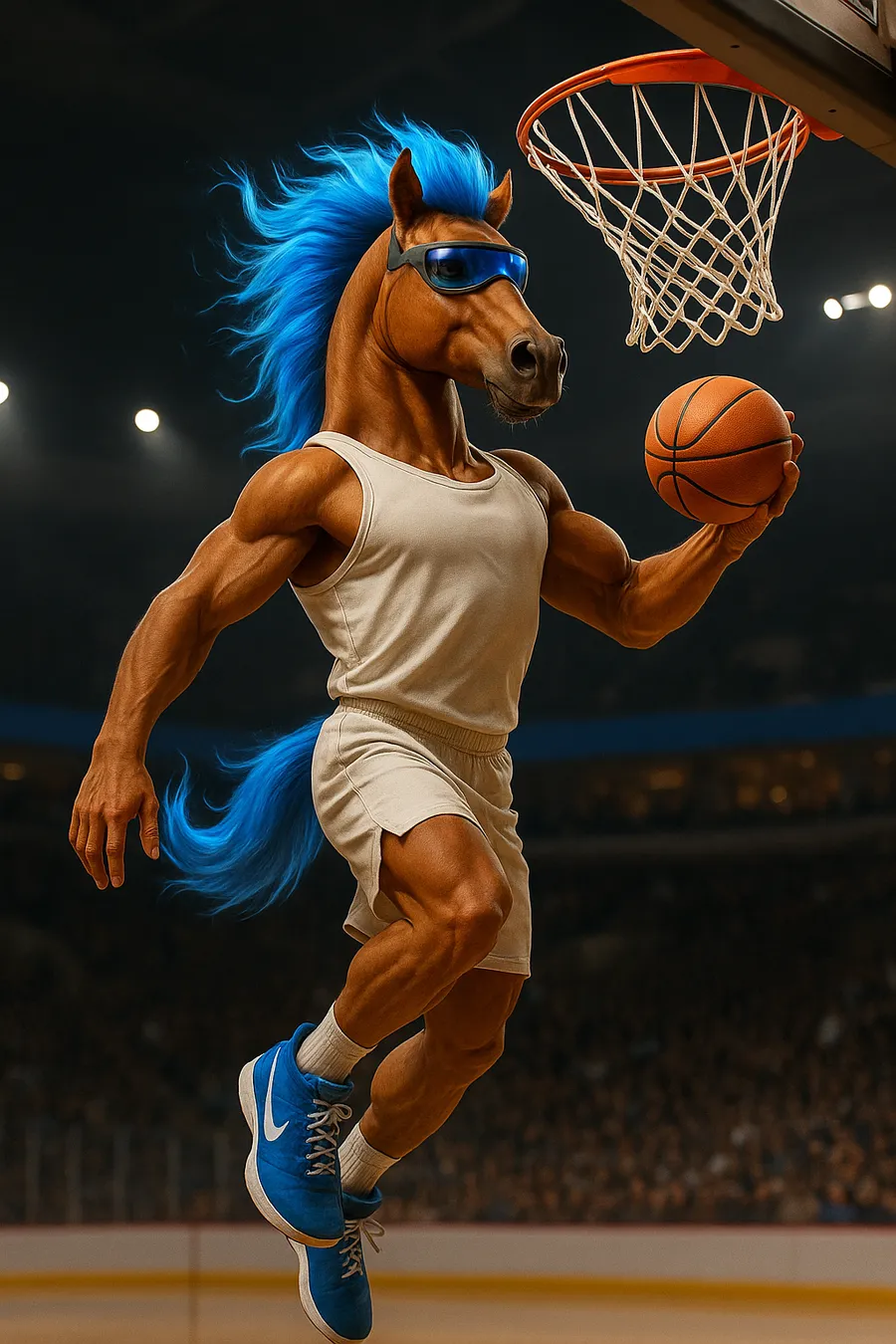
Concept: Wild mustang horse.
Design: Electrified mane, running sneakers, AR gallop effects.
Story: Tied to Texan cowboy identity, fast-paced energy archetype.
Lumberjack Rabbit (Oregon)
Concept: Fast jackrabbit wearing plaid flannel.
Design: AR speed trails, exaggerated ears.
Story: Symbol of agility, tied to Oregon forests + lumberjack folklore.
Harlem Comet (New York)
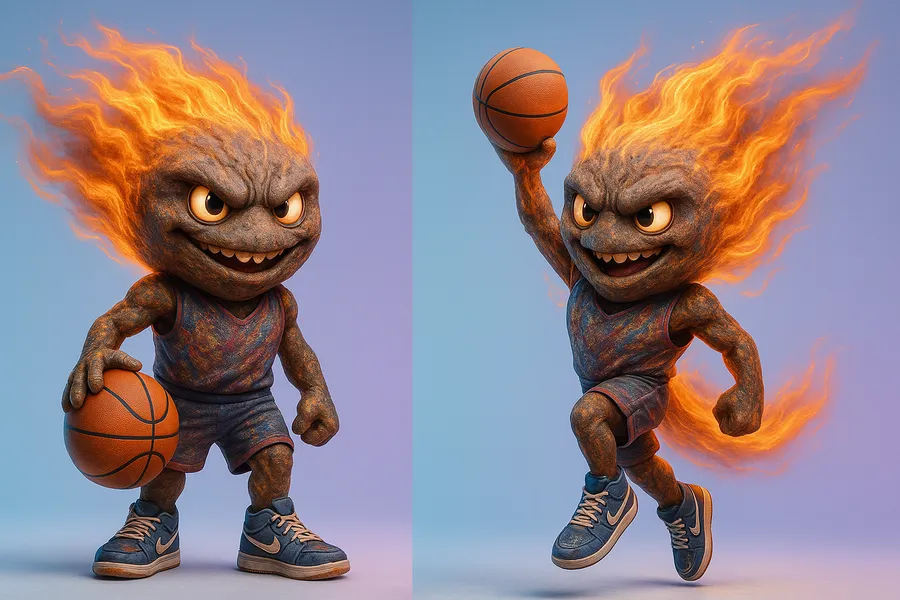
Concept: Anthropomorphic shooting star with sneakers.
Design: Fiery trails and urban graffiti textures.
Story: Represents Harlem’s history of basketball and jazz. Strong social-media story content with “cosmic dunks.”
Coyote Rider (Oklahoma)
Concept: Biker coyote mascot.
Design: Jacket with glowing neon “66” patch, hybrid bike-skates.
Story: Inspired by Route 66 Americana. Perfect for TikTok “trick challenges”.
Neon Cyber Fox (Esports/Tech City Teams – California)
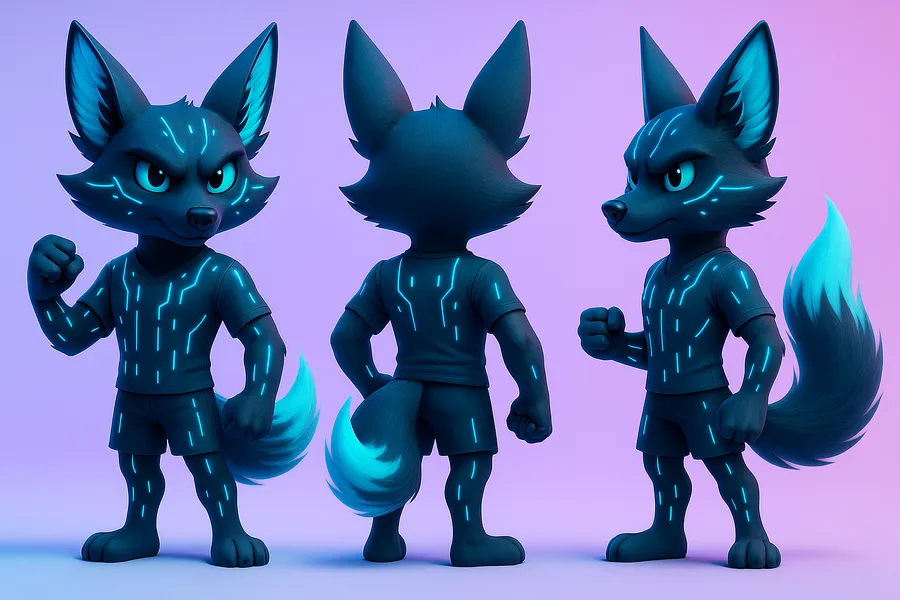
Concept: A cyber-fox infused with neon circuitry.
Design: Futuristic fur with glowing pixel sparks, sharp and witty.
Story: Represents innovation in Silicon Valley; functions as a virtual-only mascot that interacts with fans via Discord, Twitch, and VR.
Creative Sports Team Mascot Ideas for Ice Hockey
Kraken (Seattle)
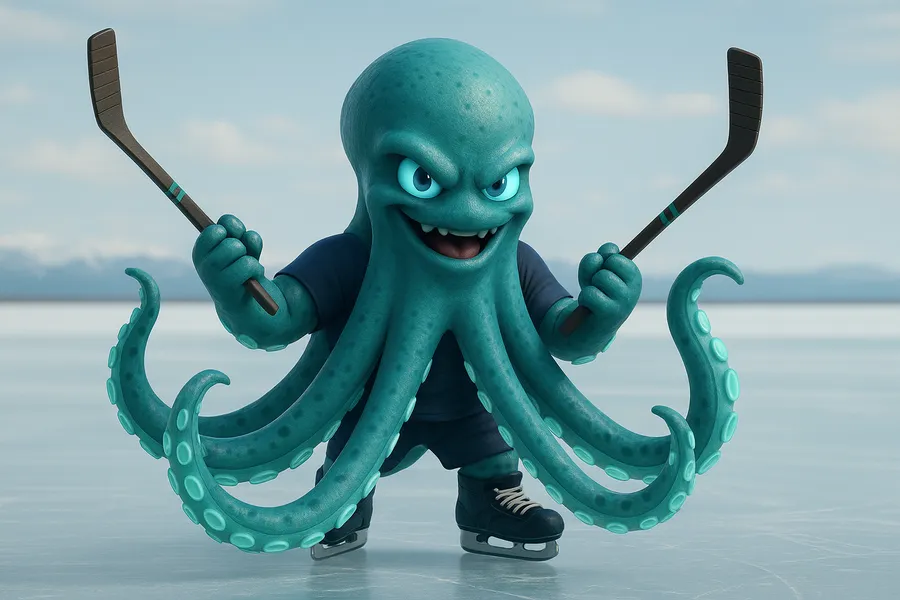
Concept: A friendly-but-fierce kraken.
Design: Cartoonish tentacles holding hockey sticks, bioluminescent glow.
Story: Deep-sea mythology tied to Seattle’s maritime identity. Fans vote in AR games where the Kraken battles rivals.
Polar Bear (Minnesota)
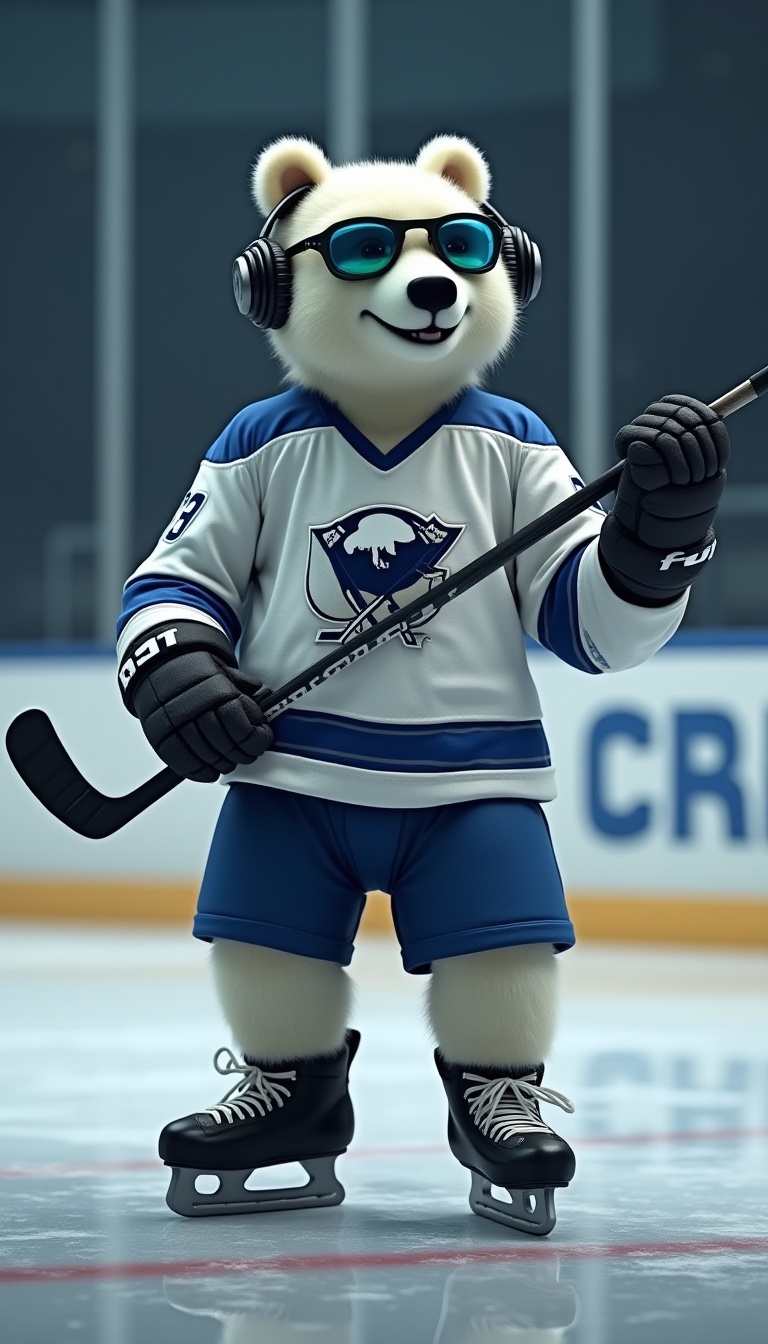
Concept: Polar bear DJ with ice goggles.
Design: Muscular but fun, cracks ice floors when dancing in AR.
Story: Nods to Minnesota winters and Gen Z love for music-integration mascots (TikTok/IG reels).
Iron Miner Moose (Michigan)
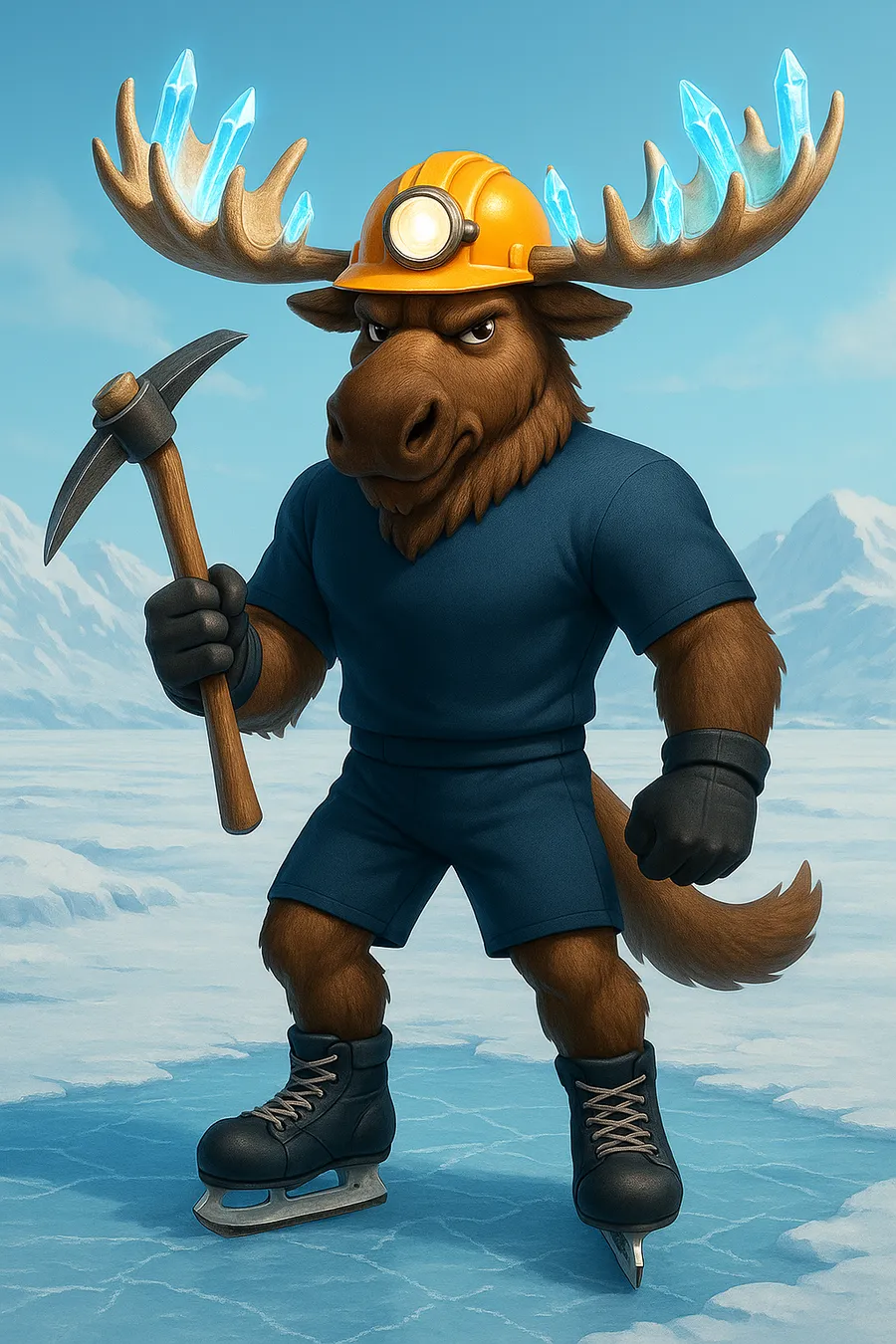
Concept: Moose with a mining helmet.
Design: Powerful, antlers tipped with glowing crystals.
Story: Symbolizes Michigan’s mining towns + rugged Midwest identity.
Neon Narwhal (Alaska)
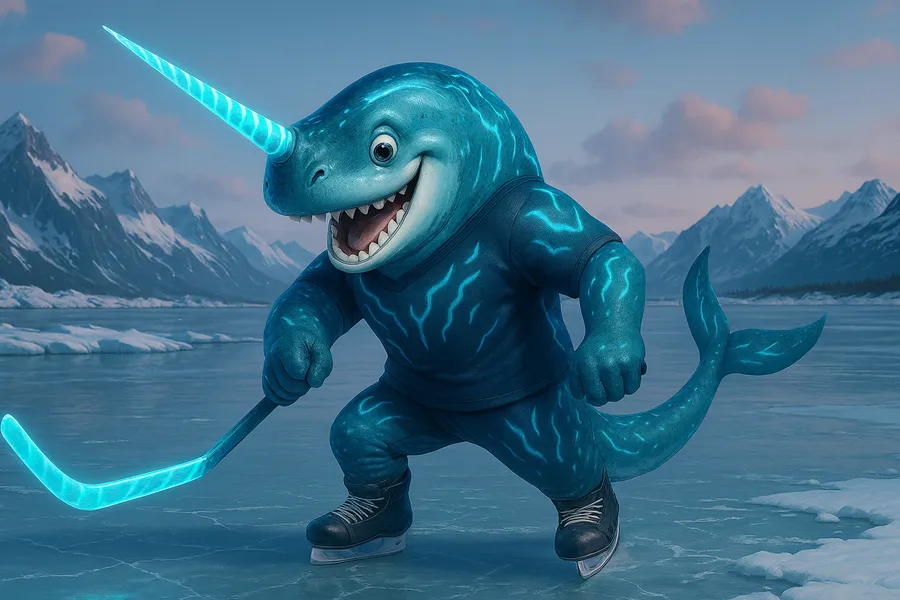
Concept: Arctic narwhal with glowing cyber horn.
Design: Futuristic icy patterns, sharp tusk doubles as a hockey stick.
Story: Celebrates Alaska’s marine life. Narwhal = mystery + power archetype.
Inspiring Sports Mascot Ideas for Soccer Teams
Canyon Coyote (Football – Arizona)
Concept: Trickster coyote with desert shades and spiky cleats.
Design: Athletic coyote with glowing eyes and tribal desert patterns.
Story: Based on Navajo folklore of the clever coyote. Appeals to American fans as the “underdog archetype.”
The Steel Forge Eagle (Pittsburgh)
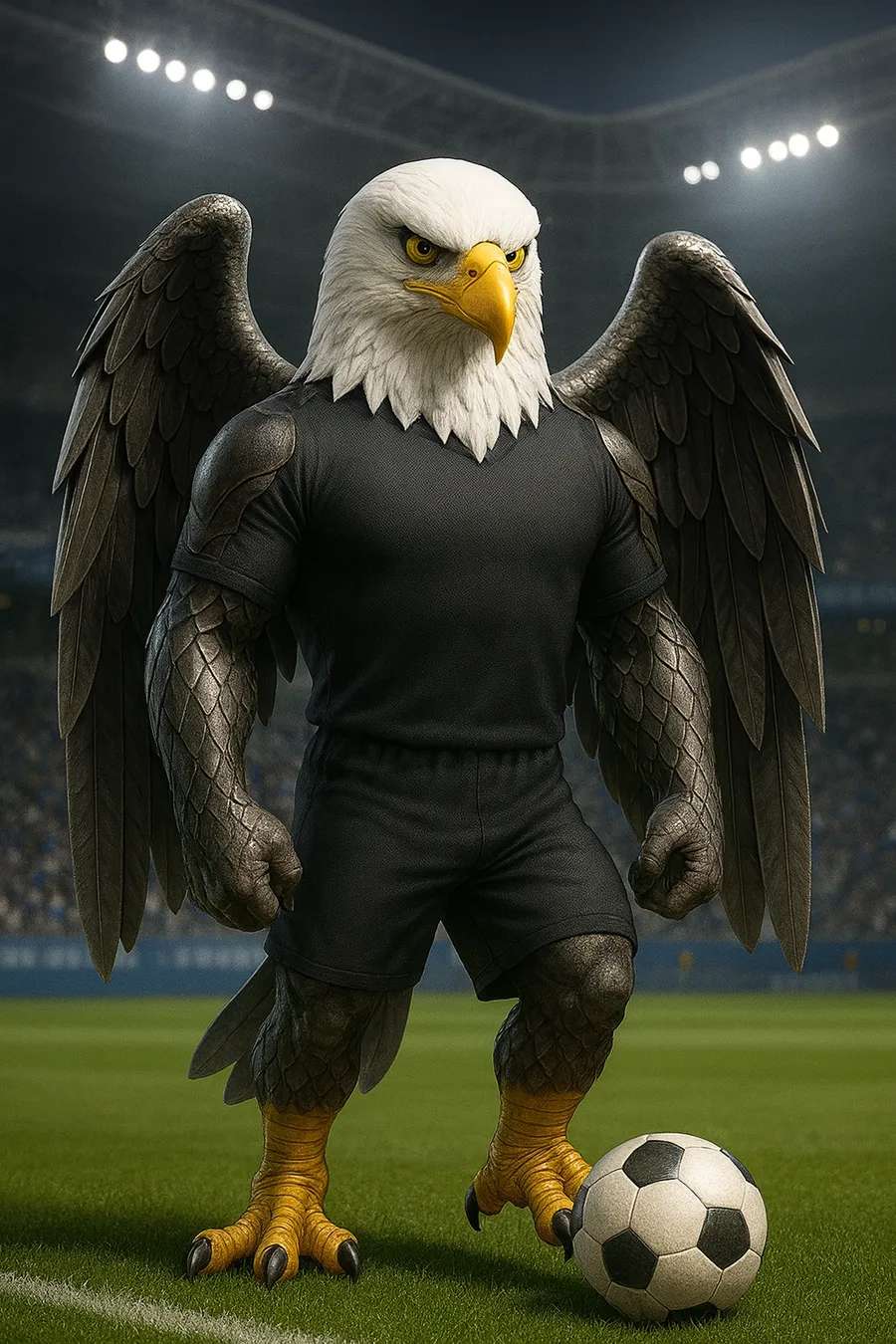
Concept: Bald eagle with steel wings.
Design: Metallic sheen feathers, industrial textures, yellow eyes.
Story: Merges America’s national bird with Pittsburgh’s steel industry heritage.
Alligator (Louisiana)
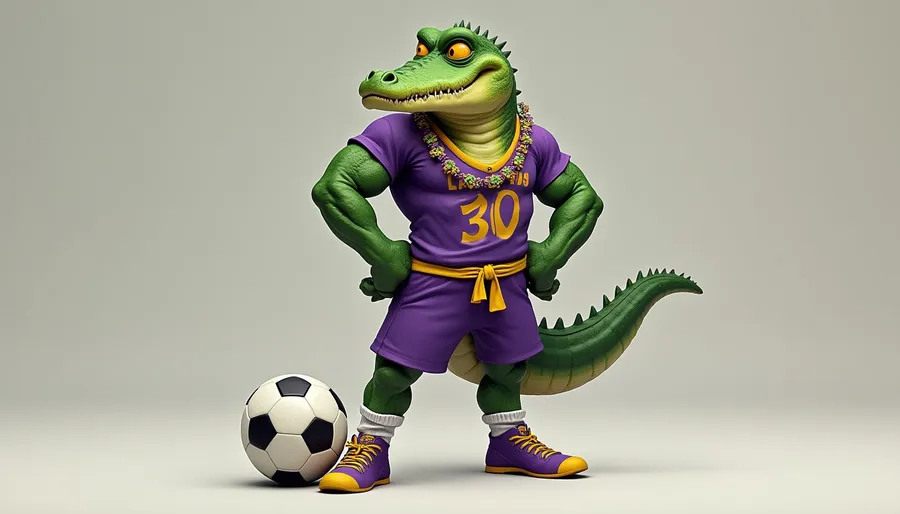
Concept: Swamp alligator with Mardi Gras beads.
Design: Green scaly armor, purple-gold outfit.
Story: Merges Louisiana culture, parades, and grit. Plays into the Warrior archetype.
Sunburst Puma (Arizona/California MLS)
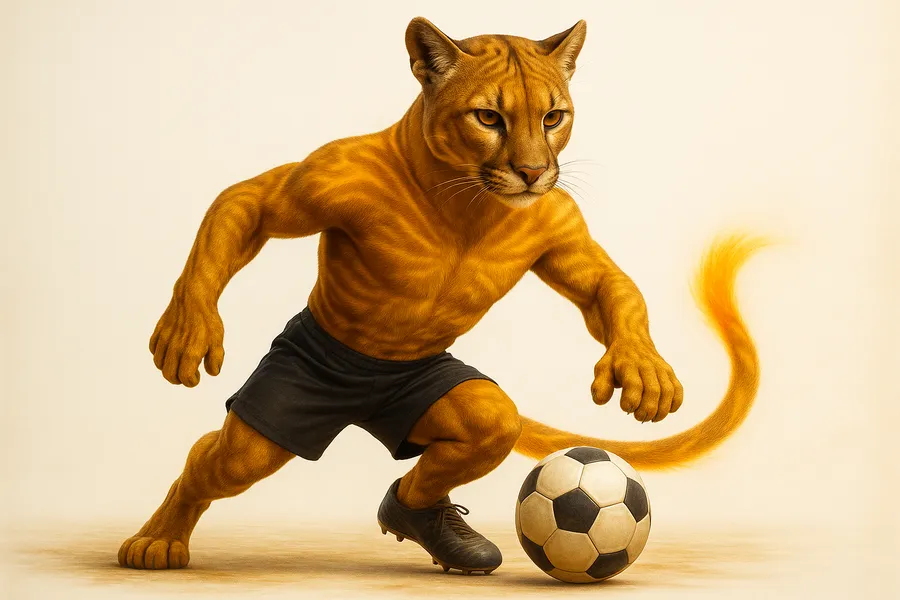
Concept: Puma with radiant desert sun markings.
Design: Sleek golden fur, solar patterns, glowing tail.
Story: Ties into both Latin American cultural symbolism of pumas and the Southwest desert sun archetype.
The Redwood Titan (California)
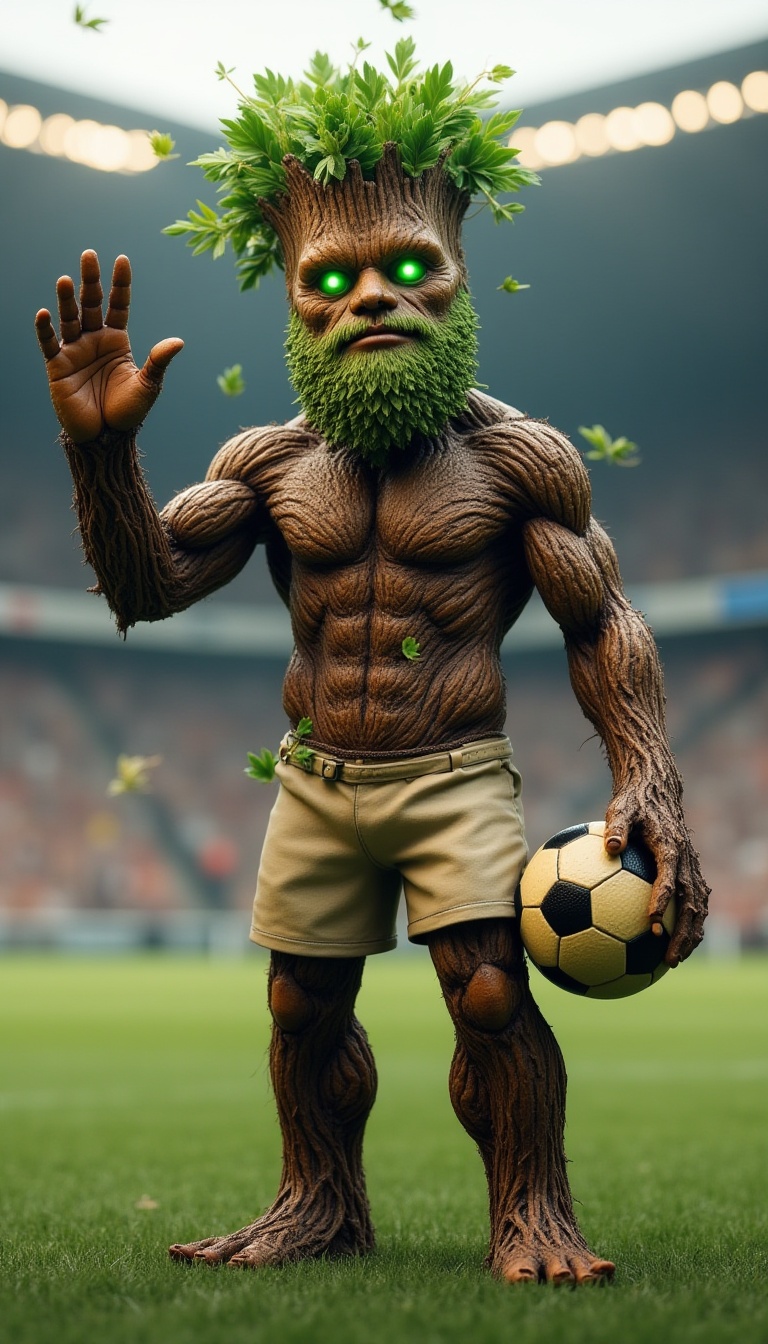
Concept: Giant tree warrior with roots as cleats.
Design: Redwood bark armor, glowing leaves.
Story: California’s state tree symbolizes endurance and environmental pride. The AI version of the mascot can host eco-awareness campaigns.
Mascot Character Design Ideas for Football Teams
Thunder Bison (Football – Kansas)
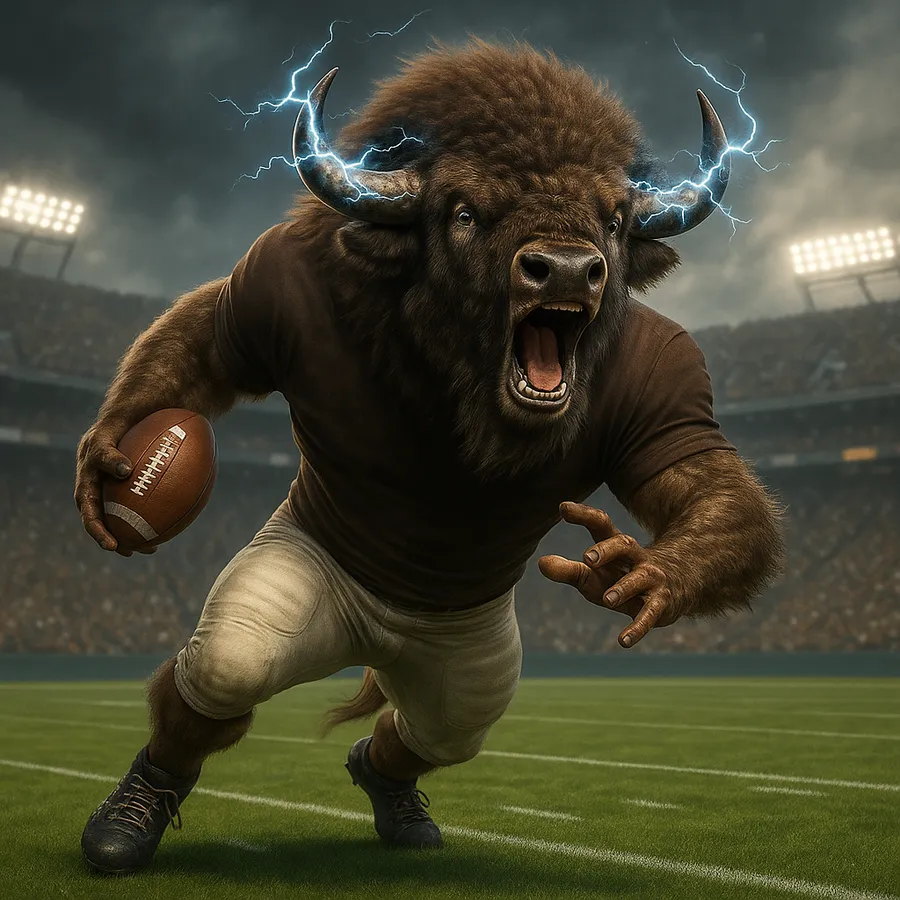
Concept: Bison roaring lightning.
Design: Horns sparking with electricity in AR/VR.
Story: Connects to Kansas prairies and the “storm chasing” identity.
Digital Raven (Baltimore)
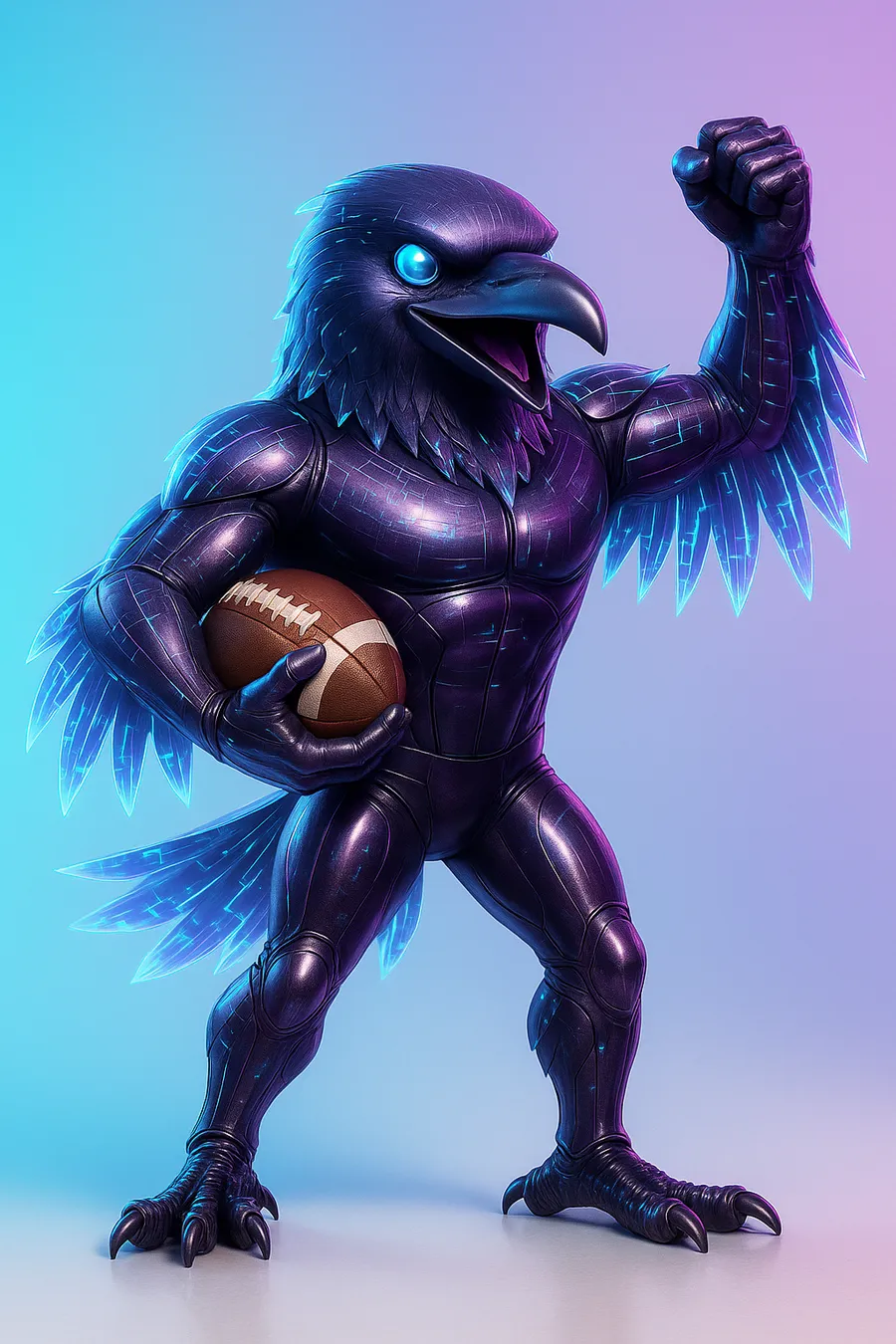
Concept: Futuristic AI raven with holographic feathers.
Design: Metallic purple shine, glitch animation style.
Story: Honors Edgar Allan Poe (already Baltimore heritage). A virtual-only mascot could run poetic social campaigns.
Contact Us Today for a Free Consultation!
Creating a successful mascot isn’t luck; it’s strategy.
Team mascots of tomorrow will need to be bold, inclusive, and ready to shine both on the field and online.
Having our marketing professionals who boast a proven track record in character design beside you can significantly enhance your chances of successful mascot branding in the future, especially in an era where AI is transforming the landscape.
Contact us to learn more about our capabilities in mascot branding.
- Read “Why Fans Love Virtual Football Mascots” to learn more about the marketing benefits for your club.
- Read “FIFA World Cup Mascots from a New Angle” to learn about their history, ranking, and future Trends.
- Read “21 Top Soccer Mascots of All Time” to learn why your club should have one.

Leila
